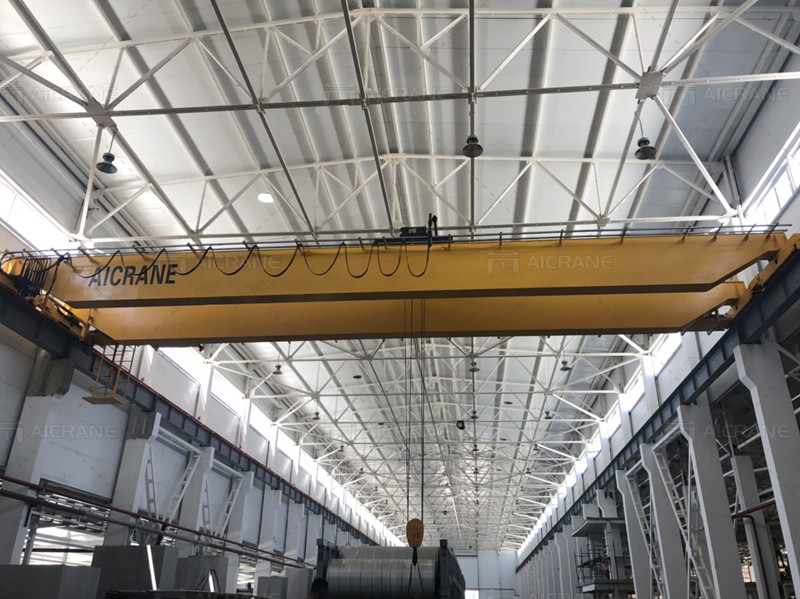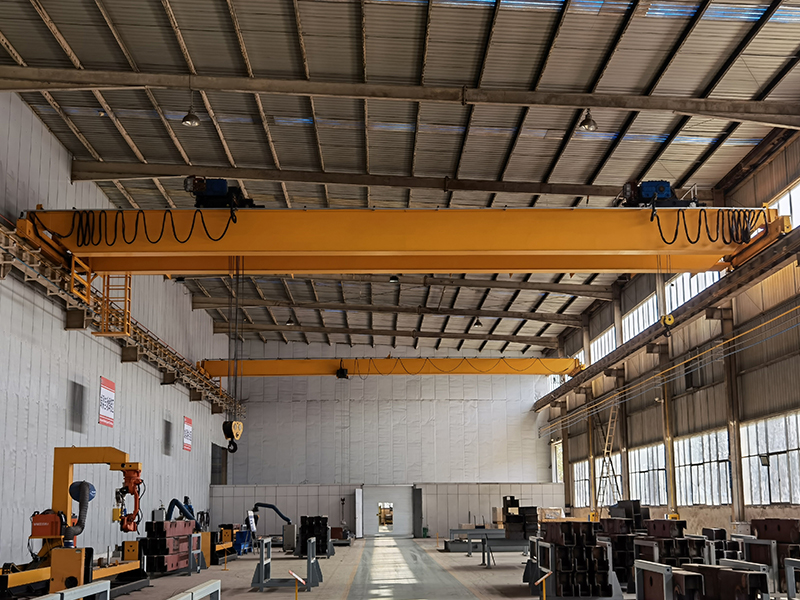In industrial settings, efficient material handling is critical for productivity, safety, and operational efficiency. Two common types of cranes used for these purposes are workshop overhead cranes and mobile cranes. Each type has its unique features, advantages, and limitations, making them suitable for different applications.
This article provides a comparative analysis of workshop overhead crane and mobile crane to help businesses make informed decisions about which type best suits their needs.

Overview of Workshop Overhead Cranes
Workshop overhead cranes, also known as bridge cranes, are fixed installations that consist of parallel runways with a traveling bridge spanning the gap. The hoist, which lifts and moves loads, travels along the bridge. These cranes are typically used in manufacturing, assembly, and maintenance workshops where heavy loads need to be moved horizontally across the workspace.
Key Features
Fixed Installation: Overhead cranes are installed in a specific location within a workshop, providing stable and reliable lifting capabilities.
High Load Capacity: They can handle heavy loads, with capacities ranging from a few tons to several hundred tons.
Efficient Horizontal Movement: The crane’s design allows for efficient movement of loads across the entire workshop floor.
Customization Options: Overhead cranes can be customized with various hoists, trolleys, and control systems to meet specific operational needs.
Overview of Mobile Cranes
Mobile cranes are versatile, movable lifting machines mounted on wheeled or tracked vehicles. They are used in a variety of environments, including construction sites, warehouses, and outdoor locations. Mobile cranes can travel over different terrains and are capable of lifting and moving loads in various directions.
Mobility: Mobile cranes can be easily moved from one location to another, offering flexibility in operations.
Versatility: They come in various types, including truck-mounted cranes, rough terrain cranes, and crawler cranes, each designed for specific applications.
Quick Setup: Mobile cranes can be set up and dismantled relatively quickly, making them ideal for temporary or short-term projects.
Variable Load Capacities: They are available in a wide range of load capacities, from a few tons to several hundred tons.

Comparative Analysis
Mobility and Flexibility
Workshop Overhead Cranes:
- Pros: Fixed installation ensures stability and reliability; ideal for repetitive tasks within a confined space.
- Cons: Lack of mobility limits their use to the area where they are installed.
Mobile Cranes:
- Pros: Highly versatile and can be used in multiple locations; suitable for projects requiring crane movement across different sites.
- Cons: May require transport permits and logistics planning for movement between sites.
Load Capacity and Range of Motion
Workshop Overhead Cranes:
- Pros: Can handle very heavy loads with precise horizontal movement across the workshop; ideal for consistent, high-capacity lifting.
- Cons: Limited to the horizontal range defined by the crane’s installation.
Mobile Cranes:
- Pros: Offer a wide range of load capacities and can lift loads vertically and horizontally; capable of working in tight spaces and over obstacles.
- Cons: Load capacity may be limited by mobility and stability factors, particularly on uneven terrain.
Installation and Setup
Workshop Overhead Cranes:
- Pros: Permanent installation ensures ongoing availability for lifting tasks; once installed, they require minimal setup time for operations.
- Cons: Initial installation can be time-consuming and costly; modifications to the building structure may be necessary.
Mobile Cranes:
- Pros: Quick setup and dismantling; can be deployed rapidly for short-term projects.
- Cons: Setup time may vary depending on the crane type and project requirements; frequent setup and relocation can incur additional costs.
Operational Efficiency
Workshop Overhead Cranes:
- Pros: High efficiency for repetitive lifting tasks; automated and remote control options enhance productivity.
- Cons: Limited to predefined paths and areas; may require additional equipment for tasks outside the crane’s range.
Mobile Cranes:
- Pros: Versatile in handling various lifting tasks; capable of reaching multiple points within a project site without additional infrastructure.
- Cons: Operational efficiency may be affected by the need for frequent repositioning and setup.
Cost Considerations
Workshop Overhead Cranes:
- Pros: Long-term investment with lower operational costs over time; maintenance can be scheduled to minimize downtime.
- Cons: High initial installation cost; potential expenses for structural modifications and customizations.
Mobile Cranes:
- Pros: Lower initial cost compared to fixed installations; rental options available for short-term needs.
- Cons: Higher operational and transportation costs; potential downtime during transport and setup.
Application Suitability
Workshop Overhead Cranes:
- Ideal for: Manufacturing and assembly lines, maintenance workshops, and environments where heavy loads need to be moved horizontally.
- Not suitable for: Outdoor sites, projects requiring frequent crane relocation, and environments with variable lifting requirements.
Mobile Cranes:
- Ideal for: Construction sites, outdoor projects, temporary installations, and environments requiring crane mobility.
- Not suitable for: Fixed, repetitive lifting tasks within a confined indoor space.
Conclusion
Both workshop overhead cranes and mobile cranes offer distinct advantages and are suited for different applications. Workshop overhead cranes provide stable, high-capacity lifting capabilities within a fixed area, making them ideal for manufacturing and assembly environments. On the other hand, mobile cranes offer unmatched flexibility and versatility, suitable for a wide range of projects requiring crane mobility.
When choosing between the two, businesses should consider factors such as the nature of their projects, load capacity requirements, operational environment, and budget constraints. Understanding the strengths and limitations of each type of crane will help in making an informed decision that optimizes productivity, safety, and cost-effectiveness.
